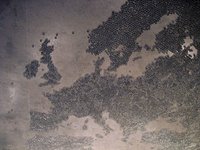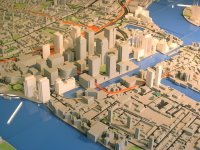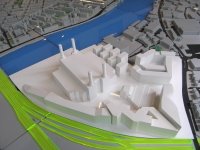
Not even Bush denies it categorically anymore. Polar caps are melting and so forth. But how does large-scale and long-term transformation look like?
This show at the Natural History Museum has sent a bunch of artists to a cluster of Swedish Islands up in the Arctic Sea to discover the given topic in their way - and the result is great. The work displayed is critical, beautiful and most important relevant: it catches your attention and makes you think, like Gary Hume's Hermaphrodite Polar bear.
At a first glance it makes you laugh because the title is kind of cute or funny in reference to the comic-style painting, but when you read that growing trash and their chemicals battle this majestic species to fight against the threat of extinction by undermining biological reproduction, then this assumed tongue-in-cheek turns into a rather nauseous lump in your throat.
My favorite piece was an installation though that consists of a weird mechanism that can send your audio-visual senses into delirium, yet it captures best what our pre-conceptions of nature are: that we think it doesn't change rapidly, but slowly and invisible. Stay a while, study the movements and you'll understand the undercurrents below the surface that don't make it into the daily news.

Antony Gormley delivers good stuff as most of the time, wheras Siobhan Davies' Endangered Species - an extremely filigran and subtle holographic video piece took me by surprise and changed my perception of "available space".
-> until 3 Sep 2006, free entry, Natural History Museum, SW7




